We are Losing Legendary Methods (Fieldwork 2) – By T. Mostert
Tok Mostert, a Professional Hunter from South Africa, now living in Sweden, is sharing his writings on dog training with us. You can start reading them from Part 1 here.
We are Losing Legendary Methods (Fieldwork 2) – By T. Mostert
Depth and Width
There is nothing more gracious than a good dog gliding over a field at full speed, turning at the edges without cutting back and working a good distance from you without losing contact. Some fields cannot be run edge to edge, it just does not make for a huntable situation, just like some areas do not allow a HPR to run at speed, this happens normally where you have thick cover.
What is acceptable depth and width for a dog to run? It depends on whom you ask and on what terrain you are hunting. I participated in a field test not too long ago during which a dog found and pointed a pheasant for over 4 minutes. The point was maybe 300 meters ahead of the judge and shooter. Judge refused to walk up to the dog and have the pheasant flushed and shot, he said the dog was not hunting for him, it was too far out. I have my own opinion on this particular scenario, and I am sure many others will have too. Point is that what is desired by one handler, is not what suits another. 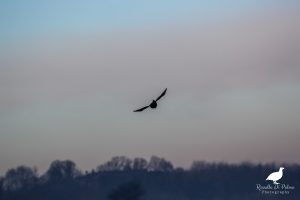
A good dog will work as far as needed without losing contact with the handler completely, now that is another subjective phrase depending on whom you speak to. I do not mind loosing contact with my dog for 2-3 minutes when she is working high cover or thick cover, I know if she is gone longer she is probably on point. It is for the same reason I do not call her in when I cannot see her, I do not want to break off a possible opportunity. You cannot expect a dog to run the same way in a forest, as he would on a large open wheat stub field.
If your dog is not steady on point and cannot stand without flushing the bird by himself, then you probably do not want him to go to deep or too wide, because chances are he will flush the birds before you get there anyway. Do not confuse this with birds that flush by themselves without the dog moving. In short, depth and width should create a huntable situation for the dog and handler. Some dogs will start shallow and short, until the figure out there are no birds close and then start going wider and deeper.
As said before, here and only here is the time to let off on the discipline and obedience a bit. Give the dog some “freedom” and let them work. The dog needs to gain experience and confidence so he can rely on himself. There is no problem with a young dog that sticks close, as his confidence grows he will increase his range. A young dog that runs wild is another issue, here hiding from the dog to force him to keep contact is a good idea.
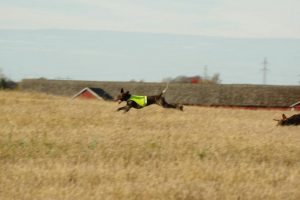
I have been extremely fortunate to have a Legend by the name of Sten Rönnerling who has helped me with Flake’s training on field. Sten has trained multiple field trials champions in multiple breeds. He had several double and triple champion dogs, a fist full of 10/10 field scores and dogs that have placed high in pointing dogs World Championships. This easily qualifies him as a Legend. He has single handedly helped me turn Flake into a proper field dog that understands what is expected from her. His methods have been tried tested and proven, again and again. At way over 70 years old, he still runs his dogs daily and can still drop a bird from the sky with little effort. When it comes to field training he has a few chosen pieces of advice, one of his first phrases was this:.
” The only time a dog should be standing still on a field is when he is pissing, pooing or pointing“.
Young dogs will, at some stage, start pointing rats, mice, rabbits, hare etc. Although this is not what we want them to do, they are doing what comes naturally, finding game. Do not be too hard on the young dog if he does this, simply break the point as quickly as possible and send the dog in a different direction. Never, never assume it is not feathered game the dog is pointing, always presume it is feathered game until you learn how to read the dog and interpret the signals. Never, never praise the dog on point if you are not 100% sure it is in fact a bird they are pointing! This, as discussed before positively reinforces the dog, but if it is not a bird you are reinforcing him to stand for game and possibly a empty spot where a bird was before, but has long since left (more on that later).
Dogs that stand and route around in one spot are a no, no be patient with a young dog that does this, but get them to move as soon as possible.
Don’t run two dogs that want to play with each other on the field, run a experienced dog with a young dog, or run him alone. Different breeds run different ways and look different, Flake ran and hunted her own way when she ran with other dogs, until I ran her with a setter, for some reason she shadowed the setter. I ran her a few times more with the setter and she let go, running her own lines again. Expose your dogs to different breeds on the field. If your dog shows any aggression towards any other dog on the field, pull your dog out, it is a completely unacceptable behaviour.
This is a broad brush I have used to describe field width and depth, there is much more detail that goes into making a dog run well, including external factors like weather, bird density, lack of birds etc.
Find a Legend like Sten to help you, it is incredible what difference it makes.
The next part will cover how to work a dog on planted birds.
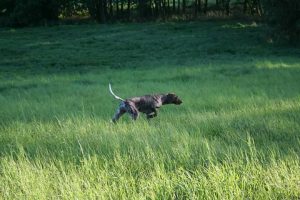
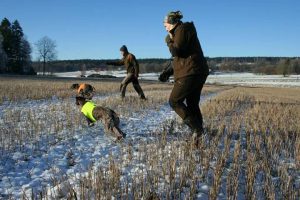

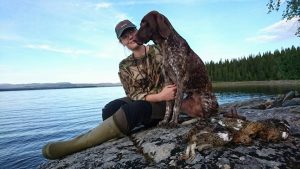
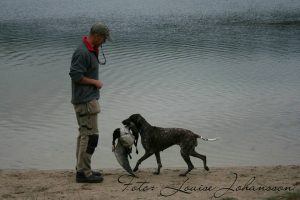
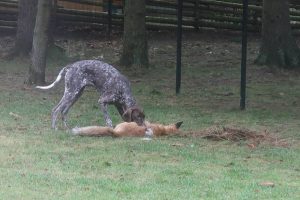
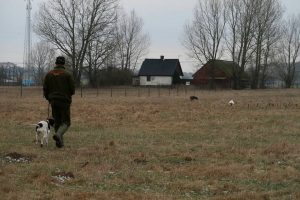


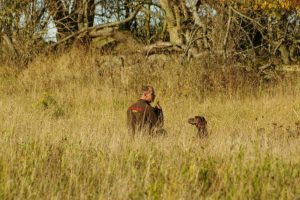
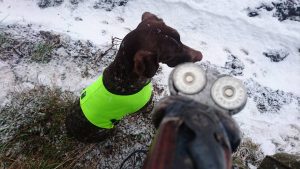
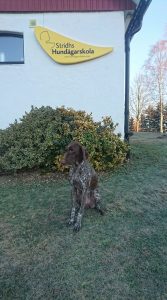

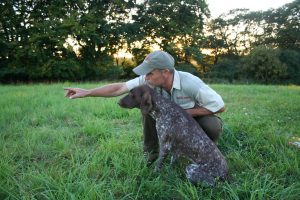 He has hunted over thousands of hoofed and dangerous animals in his own country and in Europe but he claims his best hunts have been those done together with his German Shortaired Pointer Flake. We are very happy to host his articles on pointing dogs training. They can be found in the section
He has hunted over thousands of hoofed and dangerous animals in his own country and in Europe but he claims his best hunts have been those done together with his German Shortaired Pointer Flake. We are very happy to host his articles on pointing dogs training. They can be found in the section  Studies Veterinary Medicine at the University of Milan and, being dog less at the moment, relazes herself through baking. Her recipes (cakes and desserts) can be found under the category
Studies Veterinary Medicine at the University of Milan and, being dog less at the moment, relazes herself through baking. Her recipes (cakes and desserts) can be found under the category